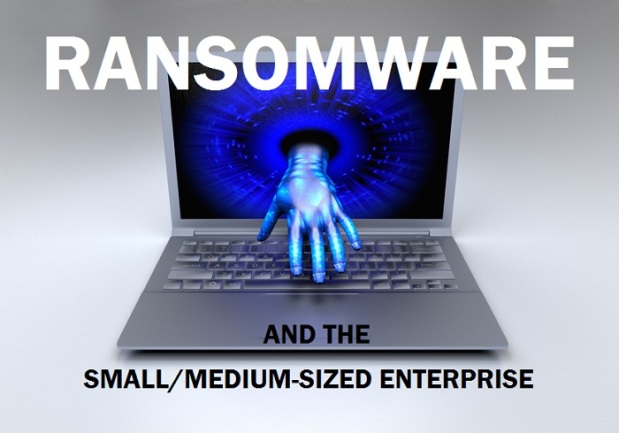Authored by Chris Olson, CEO and Co-Founder, The Media Trust.
Originally published by Security Magazine.

Defending against today’s pervasive web-based malware is not as straightforward and simple as it used to be. According to Symantec’s Monthly Threat report, the number of web attacks almost doubled in April of this year alone, up from 584,000 per day to 1,038,000 per day. Bad actors – seasoned cyber criminals, hacktivists, insiders, script kiddies and more – target premium, frequently whitelisted websites with varied motives such as financial, espionage and sabotage, to name a few. These web-based attacks are more targeted, complex and hard to detect, and when an employee visits an infected website, the damage to an enterprise network can be debilitating. Traditional security defenses like blacklists, whitelists, generic threat intelligence, AVs, web filters and firewalls fail to offer comprehensive protection. An alternative security approach is necessary, especially when working with malware data.
Managing malware data needs a paradigm shift
Currently, Information Security Professionals (InfoSec) and IT teams are trained to focus on the context of the web-based malware: What the payload might be; Is it replicating or morphing; Where’s the payload analysis; Who is targeting the website and why; along with a host of other variables. These are definitely valid questions, but should only be asked after action is taken to block it – not in order to take action.
Using existing analysis tactics to assess the ever-increasing volume of malware information is a Sisyphean task in the digital environment. The time it takes to agree that something is malicious is in direct proportion to your network’s exposure to web-based malware.
It’s time for InfoSec and IT teams to take a new, proactive approach to shielding customers and Internet real estate from web-based malware. It starts with adopting this simpler definition of malware: “Any code, program or application that behaves abnormally or that has an unwarranted presence on a device, network or digital asset.”
In essence, any code or behavior not germane to the intended execution of a web-based asset is considered malware. While this definition covers the obvious overt offenders it also includes seemingly non-malicious items including toolbars, redirects, bot drops, etc. Adopting a simple, yet broad definition enables you to focus on shielding your enterprise network from a wide range of active and potential malware attacks.
Understanding the digital environment is critical to breaking the analysis paralysis cycle and replacing it with a “block and tackle” approach. To do so, IT professionals need to focus on what matters: identifying the delivery mechanism in order to stop malware from penetrating the enterprise network. Here are five reasons why you should focus on the delivery mechanism:
Reason 1: Temporal malware is still dangerous
Web-based malware or malware delivered via the consumer internet (websites a typical person visits in the course of their daily activities, such as news, weather, travel, social and ecommerce sites) is fleeting and temporal. Research from The Media Trust reveals that in many scenarios web-based malware is active for as short as a few hours, giving little time for a deep dive analysis before blocking offending domains. If you spend time on analysis, you are a target for compromise because if the malware doesn’t infect your organization at the outset, it will most likely morph into another malicious domain or code to retarget the website with something more debilitating such as ransomware or keystroke logging.
Reason 2: Non-overt malware will turn on you eventually
Malware does not necessarily need to be complex or overtly malicious right from the start or upon initial detection. Annoying or seemingly innocuous behavior such as out-of-browser redirects, excessive cookie use, non-human clicks/actions or toolbar drops qualify as malware. While these behaviors may initially appear benign, they will frequently reveal their true intention upon a closer look at both Indicators of Threat (IOC) and Patterns of Attack (POA).
It happens quite often and reports suggest that every year researchers track 500+ malware evasion tactics used to bypass detection. For instance, a recent attack on several small and medium-tier ecommerce websites demonstrates malicious domains executing over varying time intervals and, in at least one instance, move from website to website across various geographies in order to avoid detection. In other instances, malware is specifically coded to look benign and only execute when certain conditions are met, e.g., geography, device, user profile or combinations of conditions. Taking weeks or months, this delayed execution is an effective technique to evade detection by most scanners. An auto-refresh ad on the browser or an alert to update software could be a red flag.
Reason 3: What’s in a name?
While names are understandably necessary to tag malware, there is a tendency to initially fixate on labels rather than block the malware itself. For professionals in the frontlines of trying to stop web-based malware from infecting the enterprise network, focusing on the name can increase the dwell time and do more harm than good. Instead compromised domains will give teams better insight and allow them to block the malware from penetrating networks.
Reason 4: Past malware doesn’t predict future attacks
Just because malware is validated with a name or belongs to a recognized family; it does not always mean that information to defend against future attacks is necessarily reliable. The polymorphic nature of web-based malware allows it to propagate via different domains in various shapes and forms – embed malicious code on a web page through a particular CMS platform, execute an out-of-browser redirect, or present a fake system update alert. Not only is the delivery channel constantly changing, but also the actual intent and payload may change as well. Relying on past research is not a foolproof defense when it comes to ever-changing malware propagating in the digital ecosystem, which is a complex, mostly opaque environment.
Reason 5: Death by analysis
Extensive analysis of web-based malware before blocking it could have severe repercussions – either by way of a corrupted endpoint or a larger network breach. Once web-based malware reach endpoints, it is already past the security perimeter which means remediation efforts are necessary. According to reports, the average cost for an enterprise to clean up a web-based attack is estimated to be $96,000 and more. Think of how many resources – people, time, money – could be saved if malware was immediately blocked upon detection.
By focusing on the delivery mechanism, security professionals can take a proactive stance to harden website defenses against web-based malware and also significantly reduce the time to action when it comes to securing endpoints and the enterprise networks. Real-time response is required or it provides the perfect window of opportunity for an attack to be successful.



 Read article
Read article

